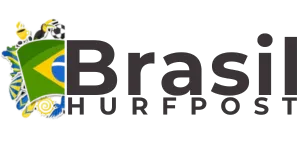
Performance review helps teams grow stronger. Managers must give feedback that is direct, specific, and encouraging.
Employees need clear comments that highlight their strengths and show where to improve.
Use the right words, and every review becomes a chance to build trust and boost performance.
Performance Review to Recognize Great Work

Everyone likes to feel appreciated, especially when they go above and beyond at work. Recognizing great performance boosts morale and shows employees their hard work is noticed.
🟢 Consistently delivers high-quality results on all projects.
🟢 Takes initiative to solve problems without being asked.
🟢 Completes tasks ahead of schedule while maintaining top-notch quality.
🟢 Brings innovative solutions to the table.
🟢 Helps team members succeed by sharing knowledge and resources.
🟢 Regularly exceeds expectations in both individual and team efforts.
🟢 Demonstrates strong attention to detail in every task.
🟢 Brings a positive attitude that inspires the whole team.
🟢 Contributes significantly to meeting critical deadlines.
🟢 Handles challenges with professionalism and creativity.
🟢 Builds strong relationships with clients and stakeholders.
🟢 Goes out of their way to ensure customer satisfaction.
🟢 Takes ownership of responsibilities and delivers without fail.
🟢 Seeks out opportunities to improve processes and workflows.
🟢 Mentors others to help them grow and achieve their goals.
🟢 Continuously looks for ways to add value to the organization.
🟢 Stays committed to excellence, no matter the obstacles.
🟢 Demonstrates exceptional leadership in high-pressure situations.
🟢 Promotes a collaborative environment by encouraging teamwork.
And saying thank you for a positive performance review is also very important.
Encourage Improvement

Not every conversation in a performance review is easy, but constructive feedback is just as important as praise.
🟢 Needs to focus on meeting deadlines more consistently.
🟢 Could improve attention to detail to avoid recurring errors.
🟢 Should work on communicating more clearly with team members.
🟢 Needs to take ownership of tasks instead of waiting for direction.
🟢 Could prioritize workload better to complete key projects on time.
🟢 Needs to address challenges more calmly without frustration.
🟢 Should seek opportunities to build stronger relationships with colleagues.
🟢 Could benefit from refining technical skills for better accuracy.
🟢 Needs to stay more organized to handle multiple tasks effectively.
🟢 Should work on responding to feedback positively and implementing changes.
🟢 Could engage more actively in team discussions and decision-making.
🟢 Needs to focus on developing creative solutions to overcome challenges.
🟢 Should work on balancing speed with quality in project execution.
🟢 Needs to avoid distractions during work hours to maintain focus.
🟢 Could benefit from better time management strategies.
🟢 Needs to participate more actively in training or development programs.
🟢 Should focus on resolving conflicts calmly and constructively.
🟢 Needs to take more initiative in identifying potential improvements.
🟢 Could build better confidence when presenting ideas or feedback.
Showing a level of empathy can be a huge boost for a worker who needs motivation.
Evaluate Job Knowledge with a Performance Review

Employees with strong job knowledge are the backbone of any team. They understand what needs to be done, why it matters, and how to do it well.
🟢 Demonstrates a strong understanding of all aspects of their role.
🟢 Applies technical skills effectively to deliver high-quality results.
🟢 Stays updated on industry trends to keep the team competitive.
🟢 Uses their knowledge to guide and mentor team members.
🟢 Adapts quickly to new tools, processes, or systems.
🟢 Consistently applies best practices to improve work outcomes.
🟢 Can explain complex concepts clearly to colleagues or clients.
🟢 Finds innovative ways to use expertise in solving problems.
🟢 Proactively seeks out training to deepen knowledge.
🟢 Combines theoretical knowledge with practical application seamlessly.
🟢 Regularly shares valuable insights that benefit the whole team.
🟢 Takes the lead in troubleshooting and resolving technical issues.
🟢 Understands the broader impact of their role on company goals.
🟢 Suggests new approaches based on their professional expertise.
🟢 Handles unexpected challenges with confidence due to solid knowledge.
🟢 Is recognized as a subject matter expert by peers and managers.
🟢 Finds ways to streamline workflows through their understanding of the job.
🟢 Always provides accurate and reliable information when needed.
🟢 Demonstrates a willingness to learn when faced with gaps in knowledge.
Focus on Initiative

The initiative is what sets outstanding employees apart. Those who take action without waiting for instructions often become the driving force behind a team’s success.
🟢 Proactively identifies and addresses potential issues before they escalate.
🟢 Takes on additional responsibilities to support team goals.
🟢 Suggests innovative ideas to improve processes and outcomes.
🟢 Volunteers for challenging tasks without hesitation.
🟢 Consistently looks for ways to optimize efficiency and productivity.
🟢 Seeks opportunities to contribute beyond their regular duties.
🟢 Demonstrates the ability to prioritize and complete tasks independently.
🟢 Finds creative solutions to overcome unexpected challenges.
🟢 Leads efforts to implement improvements in workflows or systems.
🟢 Proactively offers support to colleagues when they need assistance.
🟢 Consistently demonstrates a can-do attitude in tackling new tasks.
🟢 Proposes new projects or initiatives to benefit the team or organization.
🟢 Anticipates team needs and takes steps to address them in advance.
🟢 Embraces challenges with confidence and enthusiasm.
🟢 Quickly adapts to shifting priorities while maintaining high standards.
🟢 Develops plans to address potential risks or obstacles.
🟢 Goes above and beyond to ensure project success.
🟢 Shows confidence in making decisions when needed.
🟢 Encourages others to take initiative by leading by example.
Give Communication Feedback

Communication is at the heart of every successful team.
When people communicate well, they build trust, avoid misunderstandings, and work more efficiently.
Effective communication can truly make or break a project.
🟢 Clearly conveys ideas and information to team members and stakeholders.
🟢 Actively listens to others and responds thoughtfully.
🟢 Keeps colleagues updated on progress and any potential roadblocks.
🟢 Effectively adapts communication style to suit the audience.
🟢 Ensures everyone is on the same page by sharing key details promptly.
🟢 Asks clarifying questions to avoid misinterpretation.
🟢 Consistently provides constructive feedback to peers.
🟢 Facilitates open discussions to encourage the exchange of ideas.
🟢 Responds to emails and messages in a timely manner.
🟢 Demonstrates patience and professionalism when handling difficult conversations.
🟢 Explains technical information in a way that non-experts can understand.
🟢 Encourages team members to voice their opinions and ideas.
🟢 Resolves conflicts through clear and respectful communication.
🟢 Builds strong relationships by maintaining open and honest dialogue.
🟢 Communicates project expectations clearly and ensures alignment.
🟢 Shares updates and progress reports during meetings.
🟢 Listens to feedback from others and acts on it appropriately.
🟢 Takes time to ensure everyone understands goals and priorities.
🟢 Promotes collaboration through open and transparent communication.
Praise Teamwork
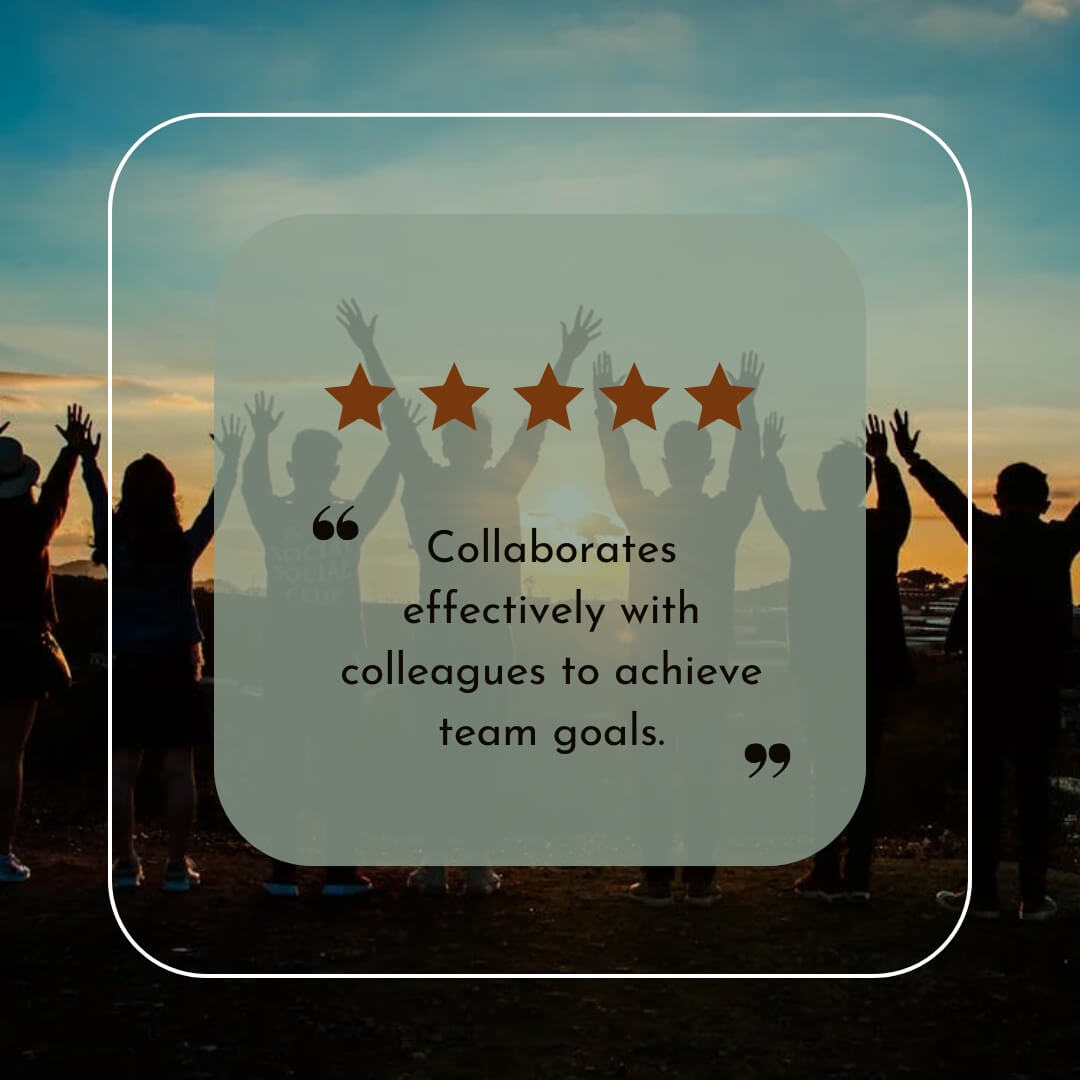
Teamwork is what turns individual efforts into shared success.
A well-coordinated team can accomplish far more than any one person alone.
🟢 Collaborates effectively with colleagues to achieve team goals.
🟢 Actively supports and encourages team members during challenges.
🟢 Shares credit for successes and acknowledges others’ contributions.
🟢 Resolves conflicts constructively and maintains a positive team dynamic.
🟢 Demonstrates a willingness to compromise for the good of the team.
🟢 Helps new team members feel welcome and valued.
🟢 Contributes ideas and listens to input from others.
🟢 Steps in to assist when a teammate needs help.
🟢 Promotes a sense of unity and shared purpose within the team.
🟢 Encourages open communication and idea-sharing among colleagues.
🟢 Shows respect for diverse perspectives and opinions.
🟢 Keeps the team focused on goals and priorities.
🟢 Takes responsibility for their role in the team’s performance.
🟢 Offers constructive feedback to teammates in a supportive way.
🟢 Recognizes the strengths of team members and builds on them.
🟢 Works to create a collaborative and inclusive environment.
🟢 Consistently demonstrates reliability and accountability to the team.
🟢 Balances individual contributions with team responsibilities.
🟢 Encourages trust and mutual respect among all team members.
Build Integrity and Trust

Integrity and trust are the foundations of a strong workplace.
Employees who consistently act with honesty and uphold ethical standards create a positive environment that benefits everyone.
🟢 Always follows through on commitments and keeps promises.
🟢 Demonstrates honesty and transparency in all interactions.
🟢 Upholds the company’s values and ethical standards.
🟢 Protects confidential information and respects privacy.
🟢 Treats colleagues and clients with fairness and respect.
🟢 Takes responsibility for mistakes and works to correct them.
🟢 Avoids gossip and focuses on maintaining a positive environment.
🟢 Consistently acts in the best interest of the team and organization.
🟢 Stands up for what is right, even in challenging situations.
🟢 Builds trust by being reliable and dependable.
🟢 Promotes a culture of openness and honesty within the team.
🟢 Ensures decisions are made based on fairness and facts.
🟢 Speaks up when they see unethical behavior.
🟢 Leads by example, setting a standard of integrity for others.
🟢 Maintains a calm and composed demeanor under pressure.
🟢 Shows respect for diverse viewpoints and avoids bias.
🟢 Encourages others to act ethically and make honest choices.
🟢 Provides constructive feedback without being overly critical.
🟢 Handles sensitive situations with discretion and professionalism.
Performance Review on Staying Professional
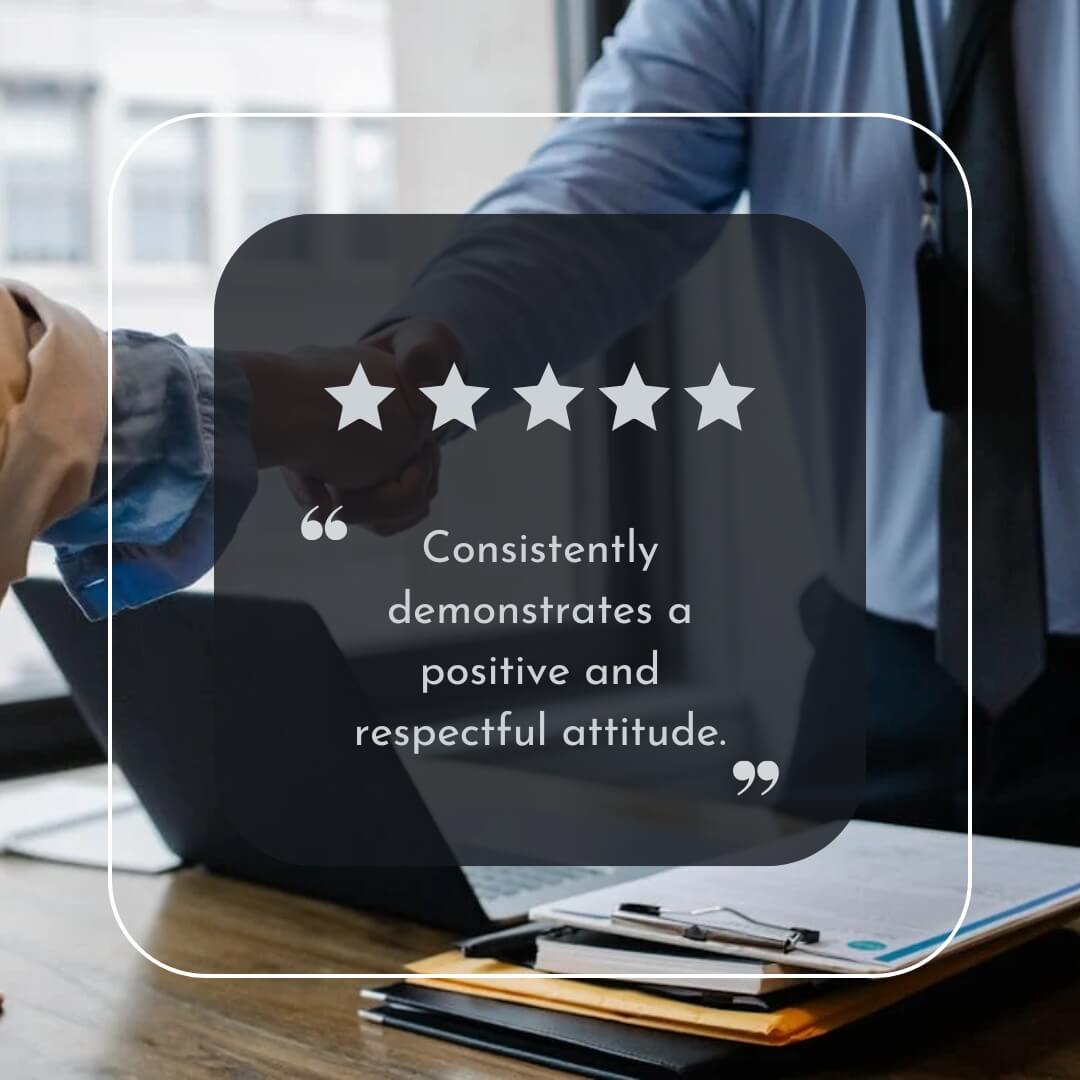
Professionalism sets the tone for how employees interact with colleagues, clients, and stakeholders.
🟢 Consistently demonstrates a positive and respectful attitude.
🟢 Handles challenging situations with grace and composure.
🟢 Dresses appropriately for the workplace and represents the company well.
🟢 Maintains focus and avoids distractions during work hours.
🟢 Communicates with clients and colleagues in a polite and professional manner.
🟢 Responds promptly and courteously to emails and calls.
🟢 Keeps personal matters separate from work responsibilities.
🟢 Accepts feedback graciously and uses it to improve.
🟢 Always adheres to company policies and procedures.
🟢 Demonstrates reliability by consistently meeting deadlines and commitments.
🟢 Maintains a tidy and organized workspace.
🟢 Respects the opinions and contributions of others.
🟢 Arrives on time and prepared for meetings or events.
🟢 Avoids gossip and focuses on fostering a positive work environment.
🟢 Handles confidential information with discretion and care.
🟢 Takes pride in delivering high-quality work, even under pressure.
🟢 Supports team members by maintaining a collaborative and respectful approach.
🟢 Represents the company positively in all professional interactions.
🟢 Demonstrates accountability by taking ownership of their work and actions.
Strengthen Leadership Skills

Leadership is about guiding and supporting others to reach their goals.
🟢 Supports the team with clear goals and direction.
🟢 Encourages everyone to share ideas and opinions.
🟢 Takes responsibility for decisions and outcomes.
🟢 Builds confidence in the team by recognizing individual strengths.
🟢 Stays calm under pressure and keeps the team focused.
🟢 Helps team members overcome challenges with practical advice.
🟢 Ensures everyone understands their role and responsibilities.
🟢 Provides constructive feedback that helps team members grow.
🟢 Promotes teamwork by resolving conflicts quickly and fairly.
🟢 Guides the team through changes with clear communication.
🟢 Takes the lead in difficult situations without hesitation.
🟢 Empowers team members by trusting them with important tasks.
🟢 Leads meetings efficiently and keeps the team engaged.
🟢 Recognizes and celebrates team achievements.
🟢 Builds strong relationships with both team members and stakeholders.
🟢 Creates an environment where everyone feels respected and supported.
🟢 Encourages professional development and growth within the team.
🟢 Adapts leadership style to meet the team’s unique needs.
🟢 Maintains fairness and consistency when making decisions.
Solve Problems Effectively
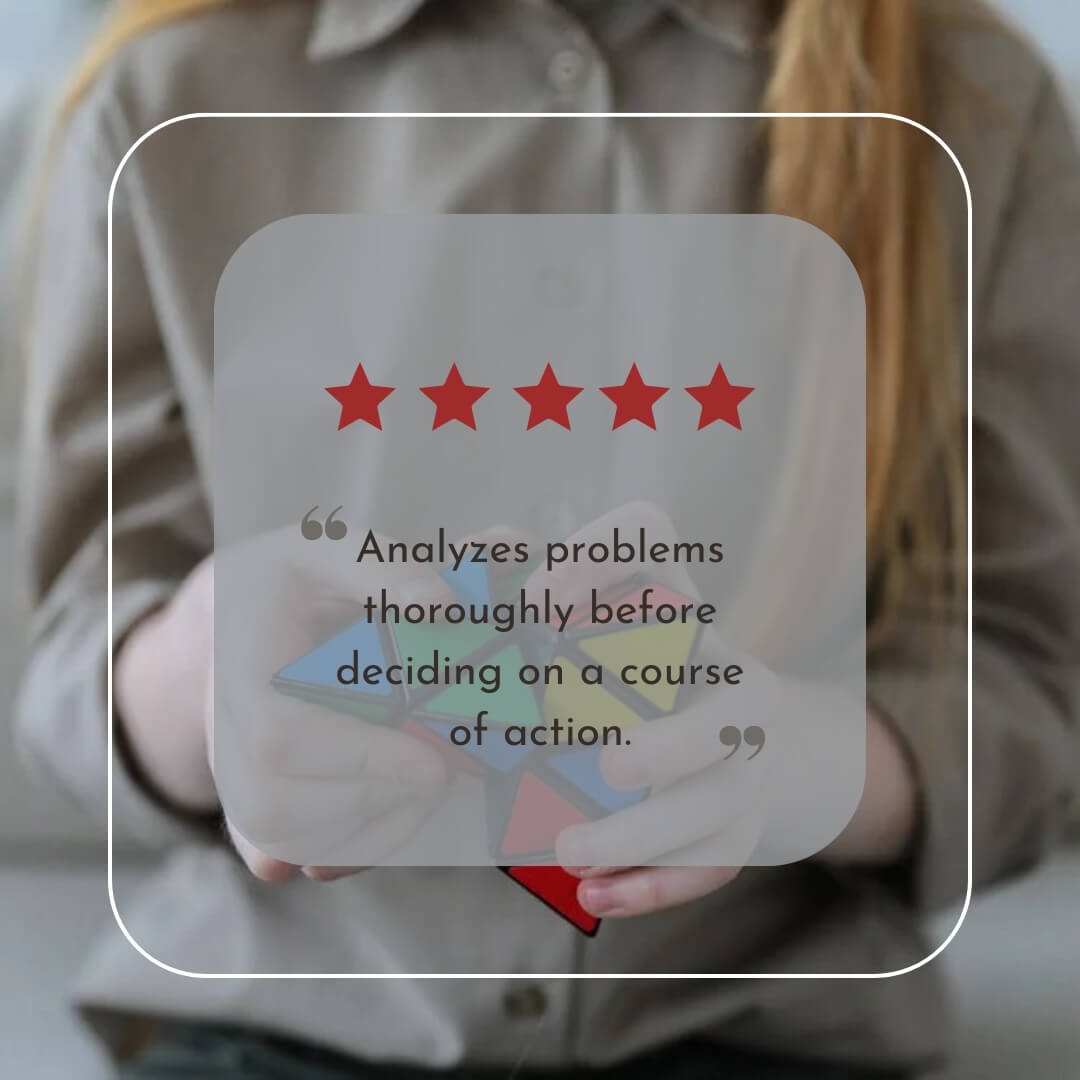
Problem-solving is a skill that drives progress in any workplace. Employees who can tackle challenges and find solutions are invaluable to a team.
🟢 Analyzes problems thoroughly before deciding on a course of action.
🟢 Develops practical solutions that address the root cause of issues.
🟢 Stays calm and focused when facing unexpected challenges.
🟢 Seeks input from others to explore different perspectives.
🟢 Uses creative thinking to come up with innovative solutions.
🟢 Communicates solutions clearly to ensure everyone is on the same page.
🟢 Anticipates potential obstacles and takes steps to avoid them.
🟢 Takes responsibility for resolving issues in a timely manner.
🟢 Handles customer complaints with professionalism and efficiency.
🟢 Balances urgency with careful planning when tackling problems.
🟢 Learns from past experiences to handle similar issues better in the future.
🟢 Identifies opportunities to improve processes and prevent recurring problems.
🟢 Collaborates with the team to brainstorm and implement solutions.
🟢 Takes initiative to address problems without waiting for direction.
🟢 Follows up to ensure solutions are effective and sustainable.
🟢 Keeps stakeholders informed about progress and outcomes.
🟢 Adapts quickly when initial solutions do not work as expected.
🟢 Maintains a positive attitude, even when dealing with difficult situations.
🟢 Focuses on long-term fixes rather than temporary patches.
Meet Deadlines with Precision
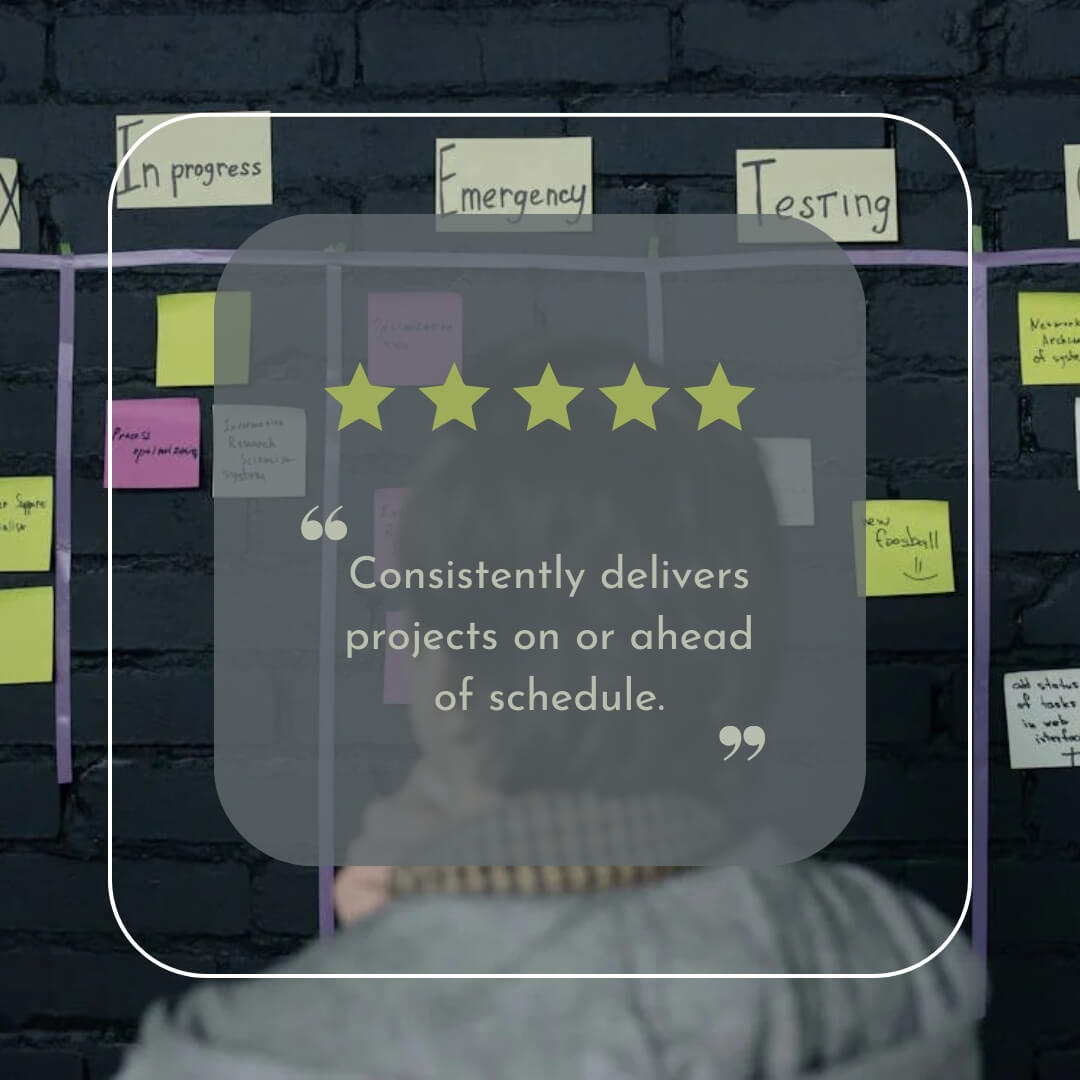
Meeting deadlines is essential for keeping projects on track and maintaining trust with clients and colleagues.
🟢 Consistently delivers projects on or ahead of schedule.
🟢 Plans work carefully to avoid last-minute rushes.
🟢 Prioritizes tasks effectively to meet tight deadlines.
🟢 Communicates early if a delay is unavoidable and proposes solutions.
🟢 Breaks large tasks into manageable steps to stay on track.
🟢 Maintains focus and avoids distractions when deadlines are approaching.
🟢 Completes tasks without sacrificing quality, even under time pressure.
🟢 Balances competing priorities to ensure all deadlines are met.
🟢 Keeps the team informed of progress to avoid bottlenecks.
🟢 Stays organized by using tools like calendars or task management software.
🟢 Handles last-minute changes or additional requests without missing deadlines.
🟢 Works efficiently without compromising attention to detail.
🟢 Regularly reviews deadlines and adjusts plans as needed.
🟢 Takes responsibility for ensuring deliverables are submitted on time.
🟢 Supports teammates by stepping in when they need help meeting their goals.
🟢 Plans ahead to account for potential delays or challenges.
🟢 Uses time wisely and avoids procrastination.
🟢 Maintains a sense of urgency without creating unnecessary pressure.
🟢 Helps the team stay aligned with project timelines.
Performance Review on Improved Productivity
Productivity drives success for both the individual and the team.
🟢 Consistently meets or exceeds productivity targets.
🟢 Focuses on completing high-priority tasks before less urgent ones.
🟢 Avoids distractions and stays on task throughout the workday.
🟢 Maintains steady progress even during challenging projects.
🟢 Uses tools and resources effectively to maximize output.
🟢 Plans tasks ahead to ensure deadlines are met.
🟢 Reduces downtime by identifying and addressing obstacles quickly.
🟢 Completes tasks with a strong balance of speed and accuracy.
🟢 Seeks out opportunities to automate repetitive tasks.
🟢 Regularly reviews processes to find ways to improve efficiency.
🟢 Manages time well, completing projects without unnecessary delays.
🟢 Collaborates with colleagues to ensure seamless workflow.
🟢 Contributes ideas that help the team achieve goals faster.
🟢 Keeps a consistent pace without sacrificing quality.
🟢 Balances multiple responsibilities effectively and stays organized.
🟢 Inspires others through their dedication and efficiency.
🟢 Takes proactive steps to improve personal productivity.
🟢 Always seeks ways to enhance team or department output.
🟢 Tracks and measures results to ensure continuous improvement.
Boost Collaboration
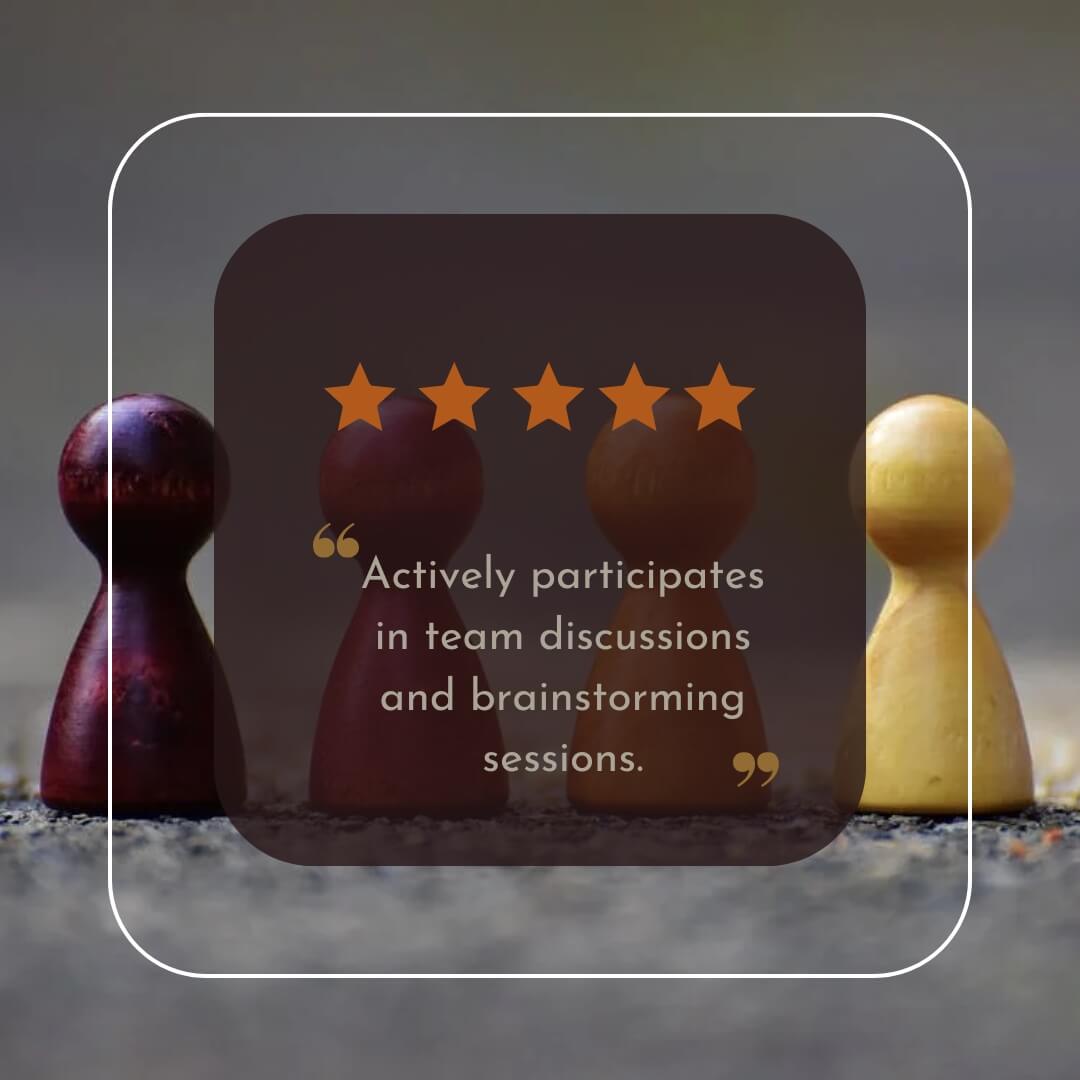
Collaboration is the glue that holds a team together. Employees who work well with others, share ideas, and support their teammates create an environment where everyone can thrive.
🟢 Actively participates in team discussions and brainstorming sessions.
🟢 Encourages colleagues to share their ideas and perspectives.
🟢 Provides constructive feedback that helps teammates improve.
🟢 Shares resources and knowledge to support team success.
🟢 Resolves conflicts quickly and respectfully to maintain harmony.
🟢 Keeps communication open and transparent with all team members.
🟢 Recognizes and appreciates the contributions of others.
🟢 Balances personal tasks with team responsibilities effectively.
🟢 Steps in to assist colleagues during high-pressure situations.
🟢 Builds trust by consistently delivering on commitments.
🟢 Creates a positive atmosphere that fosters mutual respect.
🟢 Ensures everyone feels included and valued in group efforts.
🟢 Works with teammates to set clear and achievable goals.
🟢 Listens actively to understand and support others’ ideas.
🟢 Contributes to a culture of teamwork and shared accountability.
🟢 Helps new team members integrate into the group smoothly.
🟢 Encourages collaboration across departments to achieve broader goals.
🟢 Handles disagreements constructively to maintain focus on shared objectives.
🟢 Celebrates team achievements and motivates others to keep improving.
How to Give Performance Review Feedback?

Feedback during a performance review can either motivate employees or leave them feeling uncertain about their future.
Getting it right means focusing on clarity, respect, and guidance.
A performance review should always build confidence and show a path for growth, rather than creating confusion or defensiveness.
Make It a Conversation
Instead of delivering one-sided feedback, ask questions.
Be Clear and Honest
General statements like “You need to do better” offer little value. Instead, point to specific examples and explain how the employee’s actions impacted their work.
Say, “The delay in submitting the last report created scheduling issues for the team. Let us talk about how to plan timelines more effectively.”
Clarity ensures employees know what to address.
Show the Bigger Picture
Employees need to see how their role fits into the team’s or company’s success.
Highlight their contributions and how their growth can enhance overall outcomes.
When they understand the importance of their efforts, they are more likely to stay motivated.
Offer Real Support
Feedback without a way forward can feel discouraging. Whether it is providing resources, offering training, or suggesting mentorship, make sure employees leave with actionable steps and the tools they need to succeed.
Show that you are invested in their development.
Best Ways to Track Employee Performance

Monitoring employee performance is essential for ensuring that goals are met and growth is consistent.
A well-structured approach provides managers with accurate insights while giving employees clarity about expectations.
Set Clear Goals and Expectations
Employees perform best when they know what is expected of them. Clearly define goals, deadlines, and quality standards for each project or role.
Use Performance Metrics
- Productivity: Number of tasks completed, output quality, or time spent on projects.
- Attendance: Punctuality, consistency, and adherence to schedules.
- Collaboration: Team contributions and communication effectiveness.
- Customer Satisfaction: Feedback or ratings from clients or stakeholders.
Conduct Regular Check-Ins
Schedule one-on-one meetings to discuss progress, address challenges, and realign goals.
A 15–30-minute check-in every two weeks can go a long way in maintaining focus and momentum.
Leverage Performance Review Tools
Using software simplifies the tracking process.
Tools like BambooHR and Workday allow managers to track tasks, set reminders, and evaluate key performance indicators (KPIs) in real time.
Collect Peer and Client Feedback
Peer reviews can reveal how well an employee collaborates, while client feedback offers insights into customer-facing roles.
Document Performance
Documentation helps you track patterns over time and provides a solid foundation for discussions during formal reviews.
Last Words
When you deliver feedback with clarity, respect, and purpose, it builds trust and motivation. Employees walk away not only knowing what they have done right or what needs work but also feeling that their role truly matters.
So, as you prepare for your next review, remember this: the words you choose and the way you deliver them have the power to transform not only performance but also relationships.
Approach the conversation with sincerity and a genuine desire to help, and you might just inspire someone to reach heights they never thought possible.
